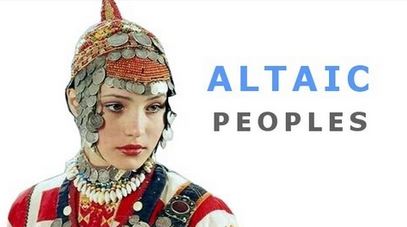The term “Altaic languages” has sparked considerable debate among linguists for decades. Some scholars believe it represents a genuine language family, while others argue that the similarities between the languages are due to contact rather than common ancestry. In this article, we’ll explore the history, structure, and current status of the Altaic languages, providing a comprehensive yet understandable overview of this intriguing topic.
What Are Altaic Languages?
Altaic languages traditionally refer to a group of languages spoken across a vast region of Eurasia, stretching from Turkey in the west to Japan in the east. The proposed Altaic language family includes the following primary branches:
- Turkic languages: Spoken in regions like Turkey, Central Asia, and parts of Russia, with languages such as Turkish, Uzbek, and Kazakh.
- Mongolic languages: Including Mongolian, spoken primarily in Mongolia and parts of China.
- Tungusic languages: A smaller group, with languages like Manchu and Evenki, spoken in northeastern China and Siberia.
- Koreanic languages: Sometimes included in the Altaic family, primarily Korean.
- Japonic languages: Another controversial inclusion, with Japanese and the Ryukyuan languages.
The Altaic Hypothesis
The idea that these languages belong to a single family, known as the “Altaic hypothesis,” was first proposed in the 19th century. Supporters of this hypothesis argue that the languages share common features, such as vowel harmony, agglutination (the process of adding affixes to words), and similar word order (subject-object-verb).
However, the Altaic hypothesis has been contested by many linguists who believe that the similarities between these languages result from language contact and convergence rather than a shared origin. This skepticism has led to a divide in the linguistic community, with some scholars abandoning the concept of Altaic languages altogether.

Structure and Features
Despite the controversy, the languages traditionally classified as Altaic do share several linguistic features:
- Vowel Harmony: Many Altaic languages exhibit vowel harmony, where vowels within a word harmonize to be either front or back vowels.
- Agglutination: These languages often use affixes to convey grammatical relationships, sticking multiple suffixes to a root word to modify its meaning.
- Subject-Object-Verb (SOV) Order: Most Altaic languages follow the SOV word order, where the subject comes first, followed by the object, and then the verb.
For example, in Turkish, “I eat bread” would be “Ben ekmek yerim,” which directly translates to “I bread eat” in English.
Current Status and Distribution
Today, the languages traditionally classified as Altaic are spoken by millions of people across Eurasia. Turkic languages are the most widely spoken, with Turkish alone having over 75 million speakers. Mongolic languages, particularly Mongolian, are also widely spoken in Mongolia and parts of China.
Tungusic languages, however, are critically endangered. Manchu, once spoken by the rulers of the Qing dynasty in China, now has only a few native speakers left. The situation is similar for other Tungusic languages like Evenki.
Korean and Japanese are sometimes included in the Altaic family, though this inclusion is highly debated. Both languages are spoken by large populations—Korean in North and South Korea and Japanese in Japan—but their classification as Altaic remains controversial.
The Controversy and Modern Perspectives
The Altaic hypothesis has lost favor in recent decades, with many linguists preferring to view the similarities between these languages as the result of extensive contact over millennia rather than a common ancestor. Some argue that the Altaic languages should be seen as a Sprachbund, or language area, where languages share features due to geographic proximity and cultural exchange rather than genetic ties.
Despite this, the term “Altaic languages” is still used in some linguistic literature and remains a topic of interest for those studying the history and evolution of languages in Eurasia.
The concept of Altaic languages represents one of the most intriguing and contentious topics in linguistics. Whether viewed as a true language family or simply a collection of languages with shared features due to contact, the study of Altaic languages offers valuable insights into the linguistic history of Eurasia.
While the debate continues, understanding the structure, distribution, and controversies surrounding Altaic languages can help us appreciate the complexity of human language and the ways in which languages influence each other over time. This article has provided a detailed yet briefly understandable overview, catering to both linguistic enthusiasts and those new to the subject.
